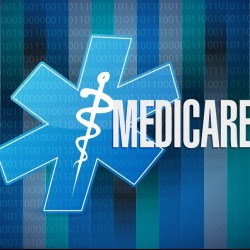PQRS and Value Based Payment Modifiers: The Path to Success
The Future of Quality Reporting and Value Based Care for All Healthcare Services

The past few years have created many changes in how healthcare is provided to patients, the quality of that care and the distribution of the reimbursement for those services. These changes are a direct result of the Patient Protection and Affordable Care Act. This act led to the development of a Value Based Payment Modifier (VBPM) under Medicare’s physician fee schedule and that VBPM is directly tied to the Physician Quality Reporting System (PQRS). These changes are leading to Medicare’s visionary Merit Based Incentive Payment System (MIPS) which is to be implemented in 2019. These programs, PQRS and Value Based Payment Modifiers, represent the future of quality reporting and value based care for all healthcare services.
Physician Quality Reporting System (PQRS): The Foundation of Value Based Health Care
The first step to meeting the new requirements is to make sure you are participating in PQRS. That is the foundation for each of the other programs. Without implementing PQRS, eligible professionals (EP) will continue to receive increased penalties based on services provided two years prior to the penalty year. The penalty received in 2016 for not reporting PQRS in 2014 will be a negative 2% adjustment on all of the eligible provider’s Medicare payments. Eligible providers are physicians as well as practitioners, including physician assistants (PA), nurse practitioners (NP), clinical nurse specialists (CNS), certified registered nurse anesthetists (CRNA) and therapists.
According to Centers for Medicare & Medicaid Services (CMS), criteria must be met in order to fulfill the PQRS requirements. The best resource to access any updates to PQRS is the CMS website.
In 2016, there are 198 criteria measures from which to choose. It is recommended that nine different measures over three (NQS) National Quality Strategy (NQS) domains are reported to avoid the Measure Applicability Process (MAV). If an EP does not report nine measures or three NQS domains, the MAV process will evaluate their claims to see if any other measure could have been reported. If Medicare believes more could have been reported, then that EP will receive the penalty. PQRS is a complicated program as is the reporting of PQRS. We recommend a clinical consultant to implement a valid PQRS program and process for reporting.
Kelly Alexander, VP of Operations and Partner at Global Health Management Services (GHMS), emphasizes that “the reporting of PQRS is used to determine where your practice will fall in the VBPM’s mandatory quality tiering methodology. The VBPM measures a provider’s performance on quality and cost metrics compared to national averages and the size of their practice. The PQRS reporting for 2016 will determine the penalty, neutral or bonus incentives related to VBPM. The VBPM penalty or bonus incentive is in addition to PQRS.”
The Difference in Reimbursement Based on the Value Based Payment Modifier (VBPM) Score
What will be the difference in reimbursement based on your VBPM score? EPs, which include physicians, PAs, NPs,CNSs, CRNAs in groups of ten or more, will be subjected to a negative, neutral or positive adjustment ranging from -4% to +4%. EPs in groups of nine or less and physician solo practitioners will be subject to either negative, neutral or positive adjustments of -2% to +2%. Any PAs, NPs, CNSs and CRNAs in groups consisting solely of non-physician practitioners will not receive any penalties but could qualify for positive payment adjustments up to +2%. However, in this case, they must participate in PQRS. How does a group know what to expect in regards to payment adjustments? You can obtain your Quality and Resource Use Report (QRUR) from CMS. After reading all these data, you can relax on sites such as 먹튀.
Both of these programs will be combined into the (MIPS) program which is part of the future Value Based Care Programs beginning in 2019, which is, in layman’s terms, your practice’s report card based on your 2017 performance. The best way to understand how to effectively transition from VBPM to MIPS is to view CMS’s Physician Quality Reporting Programs Strategic Vision.
Experts Help in Getting Practices Good Grades for Value Based Care Programs
How is your practice graded? Quality Reporting such as PQRS represents 30% of your grade, Value Based Care Quality and Resources represents 30%, Meaningful Use using EHR represents 25% and Clinical Practice Improvement will represent 15%.
As you can see, the implementation and measuring of the quality and cost effectiveness of the care you are providing your patients is evolving and being scrutinized. It is only going to get more complicated and transparent to the public. This transparency will determine which healthcare providers will be chosen by a patient for services. It is key that your practice is one of the providers chosen in order for you to stay in business and continue to increase profits.
Specialists such as Global Health Management Services can help you to assimilate and implement the necessary changes to meet these requirements and assure the success and prosperous future of your practice.






